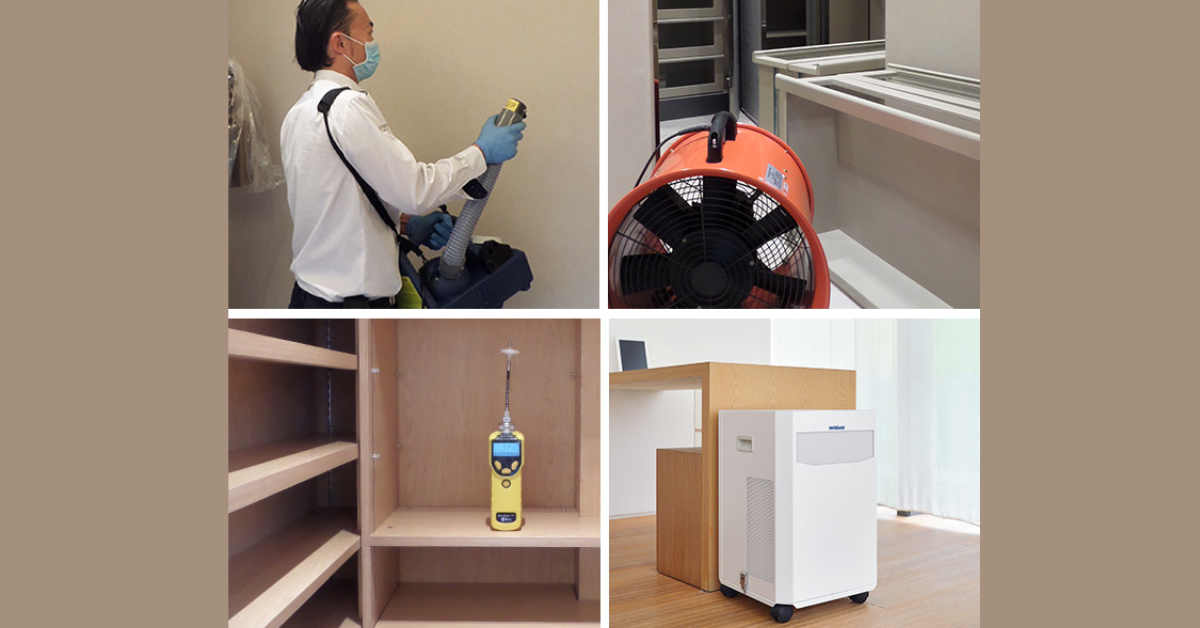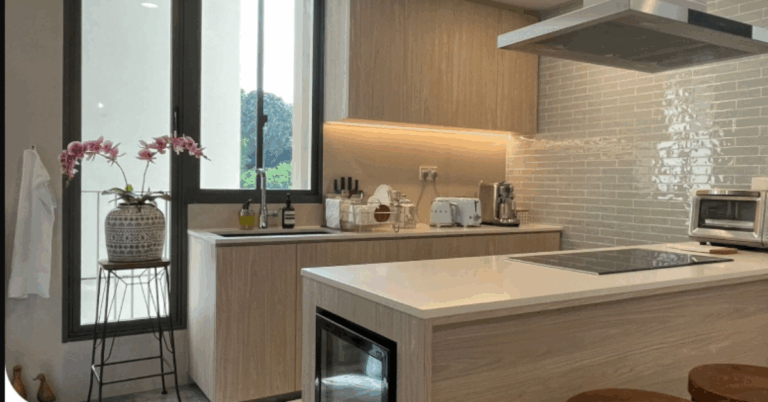Formaldehyde Removal: Your Complete Guide to a Healthier Indoor Environment
When we think about home safety, we often focus on things we can see—locks, windows, and smoke detectors. But what about the things we can’t see? One of the most dangerous and invisible threats in modern homes is formaldehyde, a volatile organic compound (VOC) that can linger in the air for months or even years after renovation.
In Singapore’s tightly sealed indoor spaces, proper Formaldehyde Removal is not just a precaution—it’s a necessity for healthy living. Whether you’re moving into a new home, just finished a renovation, or experiencing mysterious health symptoms indoors, understanding and removing formaldehyde can make all the difference.
What is Formaldehyde?
Formaldehyde is a colorless, pungent-smelling gas used widely in building materials and household products. You can find it in:
-
MDF and plywood furniture
-
Laminate flooring
-
Wall paints and sealants
-
Adhesives and glues
-
Bedding and curtains treated with anti-wrinkle chemicals
Though formaldehyde is useful in manufacturing, it’s also a known carcinogen. Prolonged exposure, even at low levels, can affect your health.
Health Risks of Formaldehyde Exposure
Short-Term Effects:
-
Eye, nose, and throat irritation
-
Headaches and dizziness
-
Coughing and respiratory discomfort
-
Skin rashes and sensitivity
Long-Term Effects:
-
Asthma and chronic respiratory issues
-
Allergic reactions
-
Increased risk of certain cancers
-
Weakened immune response in children
Formaldehyde affects everyone, but children, elderly, and people with pre-existing conditions are especially vulnerable.
Why Formaldehyde is a Serious Concern in Singapore Homes
Singapore homes are often sealed tightly due to climate control. With air conditioning running most of the time and limited natural ventilation, indoor pollutants like formaldehyde accumulate easily.
Formaldehyde levels spike after:
-
Renovations (especially painting or new flooring)
-
Purchasing new furniture
-
Installing built-in cabinets or wardrobes
-
Moving into freshly developed condos or flats
If you experience health issues at home that vanish once you leave, indoor air quality could be the culprit.
Where Does Formaldehyde Hide?
You might be surprised how many common household items release formaldehyde through a process called off-gassing:
| Source | Formaldehyde Content |
|---|---|
| Plywood, MDF, and chipboard | High |
| Wallpaper and wall paint | Moderate |
| Curtains and fabrics | Low to moderate |
| Mattress foams and upholstery | Moderate |
| Glues and adhesives | High |
It can take months or years for formaldehyde to fully off-gas. That’s why professional removal is essential.
What is Formaldehyde Removal?
Formaldehyde removal refers to the process of reducing or neutralizing formaldehyde gas in indoor environments. This is done through a combination of air testing, chemical treatments, and advanced ventilation techniques.
Unlike air fresheners or DIY air purifiers, professional formaldehyde removal targets the root of the problem and delivers measurable, lasting results.
How Professional Formaldehyde Removal Works
1. Air Quality Testing
Using sensitive VOC monitors, technicians measure formaldehyde concentration in ppm (parts per million). Readings above 0.08 ppm are considered unsafe for prolonged exposure.
2. Source Detection
Experts identify major formaldehyde-emitting items or materials, such as new furniture, wardrobes, flooring, or wallpaper.
3. Chemical Neutralization
Certified, non-toxic neutralizing agents are applied to surfaces and airspaces. These agents break down formaldehyde molecules into harmless compounds like water and carbon dioxide.
4. Ventilation Support
Powerful air circulators and exhaust systems are used to flush out treated spaces and accelerate the off-gassing process.
5. Post-Treatment Testing
A second test is performed to ensure formaldehyde levels have dropped to safe limits (typically under 0.05 ppm).
Benefits of Formaldehyde Removal
-
✅ Improved Indoor Air Quality
Feel the difference in freshness and breathe easier immediately after treatment. -
✅ Health Protection
Reduce long-term health risks, especially for kids, elderly, or those with respiratory conditions. -
✅ Safe & Eco-Friendly
Non-toxic, plant-based neutralizers ensure no harmful residue is left behind. -
✅ Fast Turnaround
Treatments can often be completed within a few hours, with re-entry usually allowed the same day. -
✅ Certified Results
Air quality reports are provided to confirm safety standards are met.
When Should You Get Formaldehyde Removal?
You should consider professional formaldehyde removal if:
-
🏠 You’ve recently renovated your home
-
🛋️ You purchased a lot of new furniture
-
👶 You’re preparing a nursery or welcoming a newborn
-
😷 Family members experience respiratory symptoms indoors
-
🏢 You’ve moved into a new office or commercial space
-
🏡 You’re moving into a resale or newly constructed property
Formaldehyde Removal in Singapore: What It Costs
Pricing depends on the size of the space, the level of contamination, and whether follow-up treatments are required.
| Property Size | Estimated Cost (SGD) |
|---|---|
| Single Room (Bedroom) | $150 – $300 |
| 3-5 Room HDB/Condo | $600 – $1,200 |
| Landed Property | $1,500 and above |
| Commercial Offices | Custom Quote Required |
Prices usually include testing, treatment, and follow-up assessment.
How to Choose a Formaldehyde Removal Service
Look for providers who offer:
-
✅ Real-time VOC testing
-
✅ Certified, eco-safe treatment solutions
-
✅ Detailed reporting and air quality results
-
✅ Years of experience in air quality remediation
-
✅ Responsive customer support and aftercare
Choosing a professional ensures both results and peace of mind.
Frequently Asked Questions (FAQ)
Q1: Is formaldehyde removal safe for babies and pets?
Yes. Professional services use non-toxic, food-grade neutralizing agents that are safe for children and animals once the space is ventilated properly.
Q2: How long does the removal process take?
Most treatments take 2–4 hours, with post-treatment ventilation requiring another few hours. The home is usually safe to re-enter the same day.
Q3: Can I just use air purifiers?
While high-quality air purifiers with activated carbon filters can help, they don’t eliminate the source of formaldehyde or offer long-term solutions.
Q4: Will the smell go away after removal?
Yes. The chemical odor associated with formaldehyde is usually neutralized during treatment, leaving your space smelling fresh and clean.
Q5: Is one treatment enough?
For most homes, a single session is sufficient. However, severe contamination or continuous off-gassing from furniture may require follow-up treatments or ventilation improvements.
Conclusion: Take Action Against Hidden Indoor Pollution
Formaldehyde is a silent pollutant that doesn’t just affect your comfort—it puts your health at risk. Whether you’ve just moved into a new home, completed renovations, or started experiencing odd symptoms, formaldehyde removal is one of the best investments you can make in your indoor air quality.
With a professional solution, you can eliminate harmful toxins, protect your family, and create a truly safe living space. Don’t wait for symptoms to appear—take proactive steps to clean the air you breathe today.







